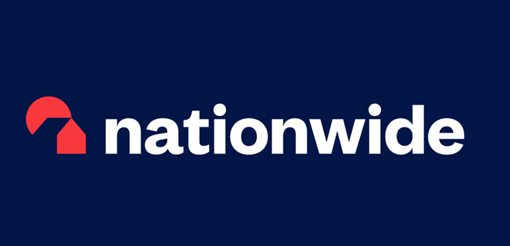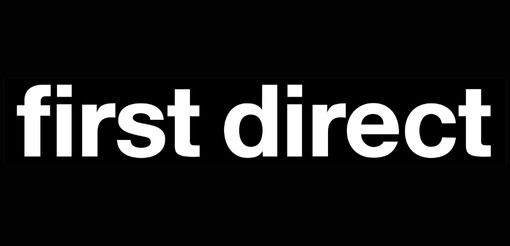How to earn rewards & freebies from your bank
There are a number of reasons to change your bank, with switching bonuses, cashback and interest often a big draw. However, the easiest ones are often ‘reward’ accounts as they usually require very little effort to make something extra every month – and you don’t even need to switch to get them.
From free cinema tickets to a fiver paid to your account each month, they’re certainly better than the accounts we’re all used to which give nothing in return.
But they aren’t without some drawbacks, including fees and requirements that you set up direct debits or deposit money each month.
So whether you’re just after one account or are happy to game the system for a handful, here’s how they work and my picks of the ones to go for.
** Update – the Halifax Reward Extra perks will end for new customers in June 2025, and for all in September. Here’s what we know so far**
Some articles on the site contain affiliate links, which provide a small commission to help fund our work. However, they won’t affect the price you pay or our editorial independence. Read more here.
Rather watch than read? Here’s my video review of reward current accounts
What is a reward bank account?
Here’s how reward accounts work:
You can earn monthly cash or freebies
Some accounts offer cash, some offer a freebies and others give you the choice between cash and freebies.
Reward accounts come with a fee
These benefits aren’t actually free! All the accounts charge a monthly fee. Some you can avoid by paying in a certain amount of money each month. Others you’ll need to take into account when working out how much you’ll make.
You might have to ‘claim’ the reward
Though some will pay the reward into your account, others (NatWest or RBS) put the money in a separate rewards wallet which you have to manually withdraw. It’s a bit pointless really.
And if you’re claiming a non-cash reward then you will have to select it, though you shouldn’t have to do anything else each month.
There will be additional requirements
Some reward account require you to either set up direct debits or pay in a minimum amount each month.
Here are the typical ones. You’re unlikely to be required to do all of them, probably just one or two.
Set up direct debits
Often banks require one or two direct debits, sometimes with a minimum value. Though ‘active’ usually means the money has to have been paid in the last year, the banks that use this only pay you the months a direct debit is paid.
It’s not such a huge issue as if you pay bills you’ve all got direct debits you could use – though they might be better suited to a cashback current account.
If that’s the case direct debits can easily be set up for other things too, such as credit card bills, memberships, subscriptions and charity donations. Here’s our guide to where to find additional and cheap direct debits.
Pay money in each month
Reward accounts often require a minimum deposit each month. This is to encourage you to pay your salary there. You can do that easily if you want – just tell your HR department of the new details.
But you don’t have to. It’s easy to transfer money in from a different current account via a standing order. You can do this as one lump sum or break it into smaller amounts over the month if that’s better for you.
And it doesn’t have to stay there either. You can transfer it back out straight away.
Get the best of our money saving content every Monday & Thursday, straight to your inbox
Plus, new Quidco customers get a top paying £20 welcome offer





Spend on your debit card
A couple of accounts require you to spend on the debit card too. You can do this as part of your regular spending but it does mean you’ll miss out on cashback from a different card. Once again there are ways to get around this, as explained in this Halifax Reward hack article.
Use your internet banking or the app
You might also need to log in to your banking app or online account once a month to qualify for the reward. It’s worth setting a reminder in your calendar to do this if it’s not an account you’re using regularly.
My top reward bank accounts
Here’s my opinion on the different reward accounts.
Club Lloyds account
- What you get: six free cinema tickets (Vue or Odeon), a year of Disney+ with Ads, a magazine subscription OR a dining membership
- Exclusive savings: 6.25% regular saver
- Monthly fee: £3, though refunded if you pay in £2,000 a month
- What it’s really worth each year: between £40 (magazine subscription) to £60 (equivalent value of six £10 cinema tickets)
- Requirements: none
- Maximum number of accounts: one individual and one joint
The Club Lloyd account is my top pick as it’s the easiest one to get. There’s no reason why you can’t just open this up (ideally via a switching bonus), set up a standing order to pay the £2,000 in (and out) each month, and keep claiming your reward.
You can have one personal and one joint account and claim the rewards on both, so that’s potentially three between a couple.
Here’s my full review of the account, where I break down which freebie “Lifestyle Benefit” I feel gives the best value.
Halifax Reward account
- What you get: £5 a month, one Vue ticket a month, OR 3 digital magazines a month subscription
- Monthly fee: £3, though refunded if you pay in £1,500 a month
- What it’s really worth each year: £60 (if you go for the cash option) to up to £120 (if a cinema ticket costs £10)
- Requirements: £500 spend on your debit card or £5,000 held in the account
- Maximum number of accounts: three per person
You get more from the Halifax Reward account so it was a close call between the two accounts for my top spot – you just need to jump through an extra hoop to get this one.
To get your choice of reward (more on how the account works and what you can get in my review here) you need to spend £500 a month on your debit card or save £5,000 every month.
To start I wasn’t a fan of this as it meant missing out on interest elsewhere or on cashback from my cashback debit and credit cards.
But I’ve since found a workaround where you use your Halifax debit card for other payments, such as paying off your credit card or adding money into an NS&I or Chip saving account.
So with this in mind it should be an easy reward to claim and well worth having it alongside the Club Lloyds account.
In fact, you can have three individual accounts and earn three lots of rewards, meaning you can earn £180 a year in total. I’ve explained all – and how to get around the requirements – in this Halifax Rewards hack article.
Monzo Perks account
- What you get: an annual railcard, one free Vue ticket a month, a free Greggs treat a week
- Monthly fee: £7 (£84 a year)
- What it’s really worth each year:
- Requirements: £500 spend on your debit card or £5,000 held in the account
- Maximum number of accounts: three per person
If you need a railcard (worth £35), go to a Vue each month (let’s say 12 times £6, so £72) and pick up a £2 Greggs treat twice a month (£52 a year), you’d be well in profit versus the £7 monthly fee. Of course, that’s only good if you actually need those things!
We’ve written up a full review of the Monzo Perks account so you can decide if it’s for you or not.









 Featured switching deal
Featured switching deal












 Customer rating
3.7/5
Customer rating
3.7/5
- Switch bonus£200
- Offer endsUnknown
- FSCS Protected? Yes
- Bonus requirements Switch using the Current Account Switch Service and close your old account within 60 days of starting the switch
- Deposit requirements Deposit £1,500 in the first 60 days from opening the account
- Direct debits transferred over Set up two Direct Debits before or after the switch from a selected list of household bills
- Existing customers? Can't have held any Santander current account on 1 January 2025
- Restrictions Can't have received a switching bonus from Santander already, offer limited to once per person
- Eligible accounts Open a new or hold an existing Everyday, Edge, Edge Up or Edge Explorer current account
Other reward accounts
For completion, here are the other main reward current accounts. It might be worth looking at these if you already bank with them, or if there’s a switching offer on top.
NatWest or RBS Reward account
- What you get: £5 a month reward
- Exclusive savings: 6.17% Digital Regular Saver (available to all current account holders)
- Monthly fee: £2
- What it’s really worth each after the fee: £36
- Requirements: two direct debits of at least £2 each and log into your account once a month, deposit £1,250 a month
- Maximum number of accounts: one personal and one joint from NatWest and one personal and one joint from RBS
This account used to be a favourite of mine, but since its revamp a few years ago it’s not really worth it unless you have direct debits to spare or open it up when a switching offer is running.
The Rewards account is one where you have to log in to a separate ‘MyRewards’ account to claim your bonus. You can send it as cash to your account, donate it to charity, or top it up as an e-gift card payment.
Here’s more on how the account works. It’s the same for the Reward account offered by RBS.
Barclays Blue Rewards
- What you get: free Apple TV+
- Exclusive savings: 4.87% Rainy Day Saver on up to £5,000
- Monthly fee: £5 (£60 a year)
- What it’s really worth each year after the fee: £57.88
- Requirements: pay in £800 each month
- Maximum number of accounts: one
This one is no longer worth it in my opinion, though if you are committed to paying for Apple TV+ every month (which costs £8.99) then this will save you close to £58 over the year. However I think most people are better off just paying full price for Apple one or two months a year and binging the content.
If you decide you want to do that, then you’ll also get access to a 4.87% paying savings account on balances worth up to £5,000.
TSB Spend and Save Account
- What you get: £5 cashback for the first six months
- Exclusive savings: 6 Monthly Saver (available to all current account holders)
- Monthly fee: £0
- What you’ll really get each year: £30
- Requirements: make 20 payments a month
- Maximum number of accounts: at least one personal and one joint
TSB Spend and Save Plus Account
- What you get: £5 cashback
- Monthly fee: £3
- What you’ll really get each year after the fee: £24
- Requirements: make 20 payments a month
- Maximum number of accounts: at least one personal and one joint
I’m not a fan of these accounts either as you’ve got to make 20 debit card payments each month to get a fiver. And the reward only lasts for the first six months. Once for completists only. You can however get an extra £30 cashback from Quidco for switching.
Like the free TSB Spend and Save account you’ll earn £5 a month, but you won’t be limited to the first six months. After the £3 monthly fee you’ll make £24 a year. However, you still have to make 3-20 card payments which I think is a stretch when there are better paying cashback cards out there.
Should you get a reward current account?



Andy’s Analysis
If you’re comfortable with multiple current accounts then I’d definitely look at getting the Lloyds and Halifax accounts.
After this I’d only bother with the NatWest and RBS accounts if I already had one, or get one via a switching bonus.
Even I can’t be bothered with the TSB rewards due to the faff, while the fee for Barclays just doesn’t add up for most.
Having multiple reward accounts
As I’ve said many times, there’s no reason why you only have to have one current account – and that means you can have multiple reward accounts too.
You’ll usually only be allowed one personal reward account with each bank, though it does vary, and most let you can have an extra one as a joint account too. That means you could potentially have three accounts in a household, and three times the rewards.
But the more you have, the more you have to do to be eligible. Some are easy to overcome, others might make it less worthwhile.
Recirculating your inbound payments
Most people should be able to cover the minimum deposit payments for one reward current account. And if you have more than one then it’s easy to repeat for the others by moving the same money between each account.
I actually do this via a standing order where the money automatically goes from bank to bank to hit the eligibility threshold, with it eventually coming full circle back to my original account.
Covering the fees
This is a bit of faff, but manageable. Since some of the accounts charge a fee but don’t pay the reward directly into your account, you’ll have to make sure there’s enough in there each month to cover this charge. You’ll also need to remember to transfer the reward over each month too.
Running out of direct debits
If you have multiple reward accounts then you might quickly run out of direct debits. It used to be you could set up a couple of £1 ones for charities, but the banks have cottoned on to this and made it pretty pointless.
For example, NatWest give you £2 back for each direct debit, but the DD needs to be at least £2. So if you’re setting up a new payment just to get the reward, you won’t actually be any better off.
Of course you could see it as free cash for charity – which is great – but it does require a bit of effort.
Alternatives to reward accounts
Of course, there could be a better bank out there which should be your priority. Things like overdraft fees or savings account rates might be more important to you. Digital banks like Starling and Monzo have great features to help you budget, or perhaps you want to make sure you have access to a branch.
And of course it might work out more profitable to go for switching bonuses or cashback on your bills via Santander or on spending via Chase.


















